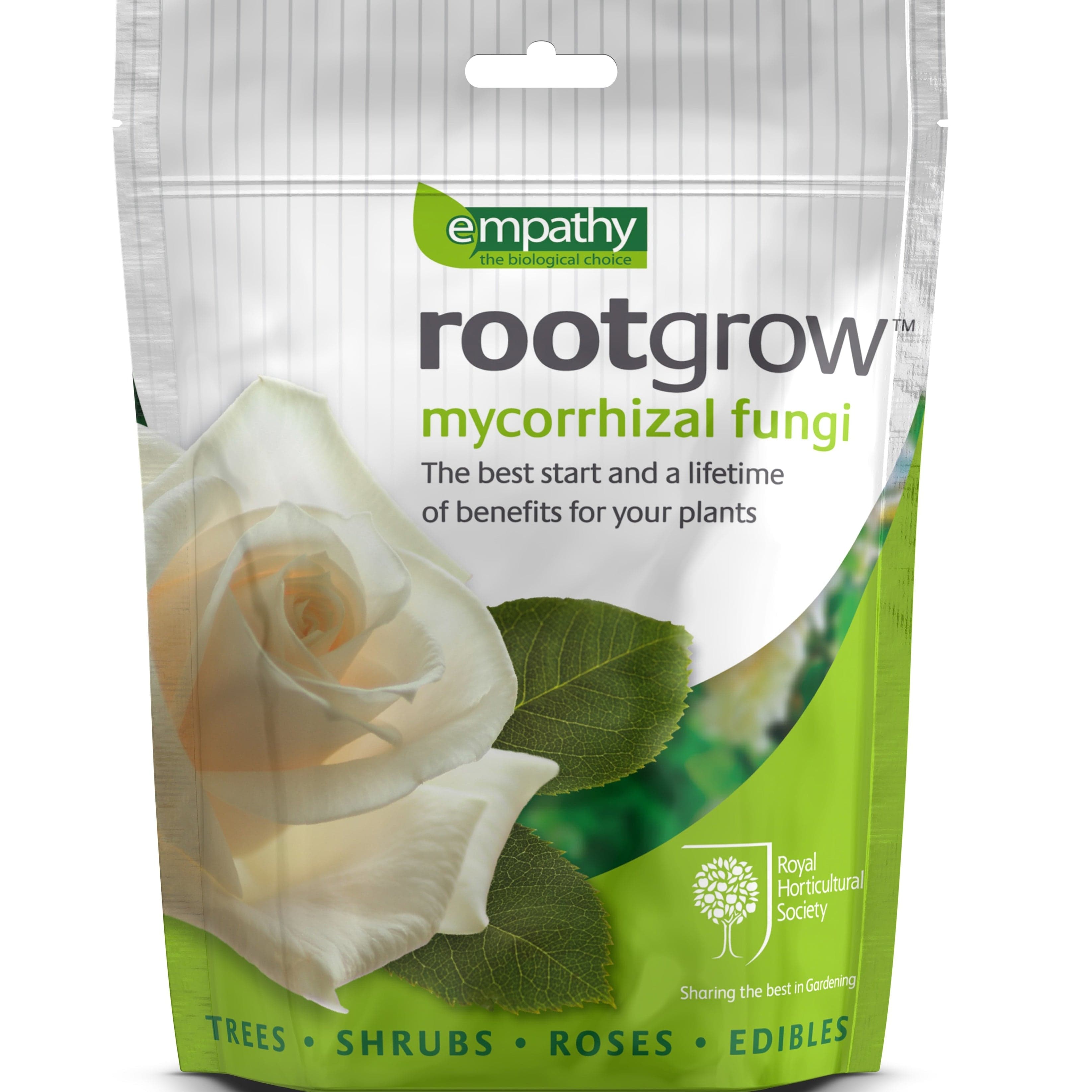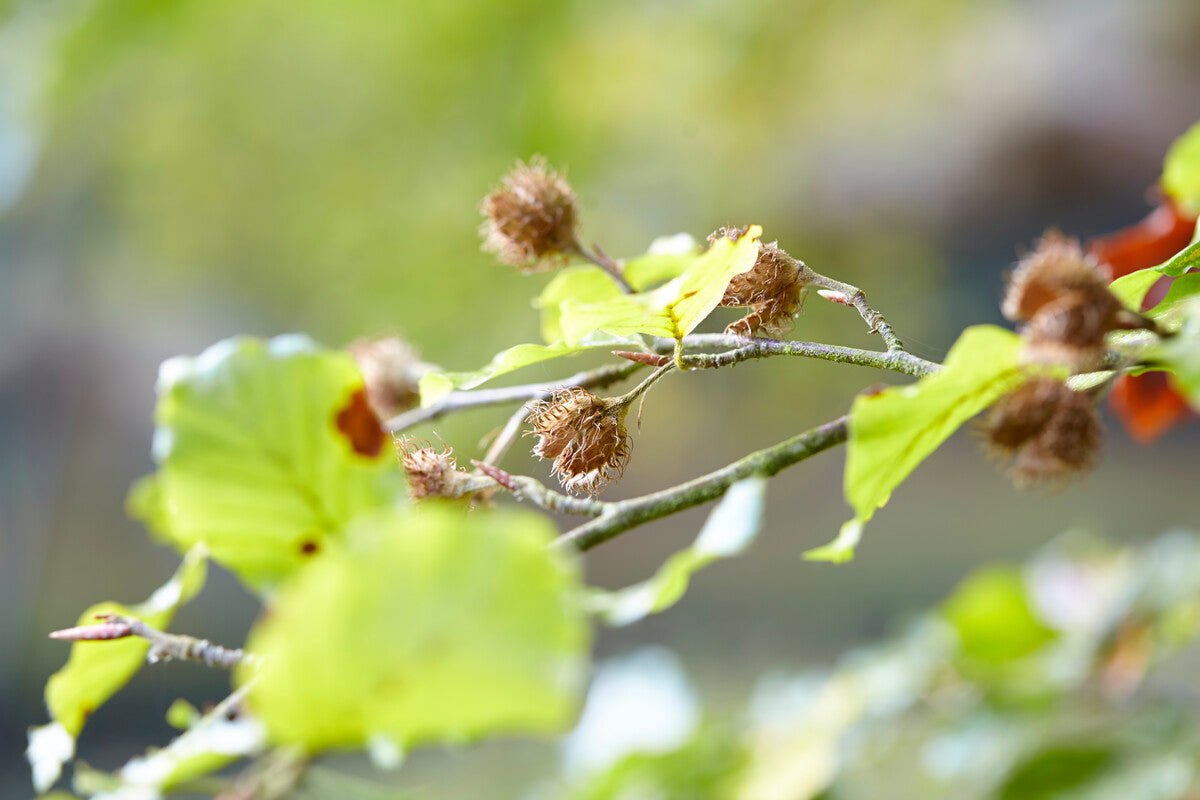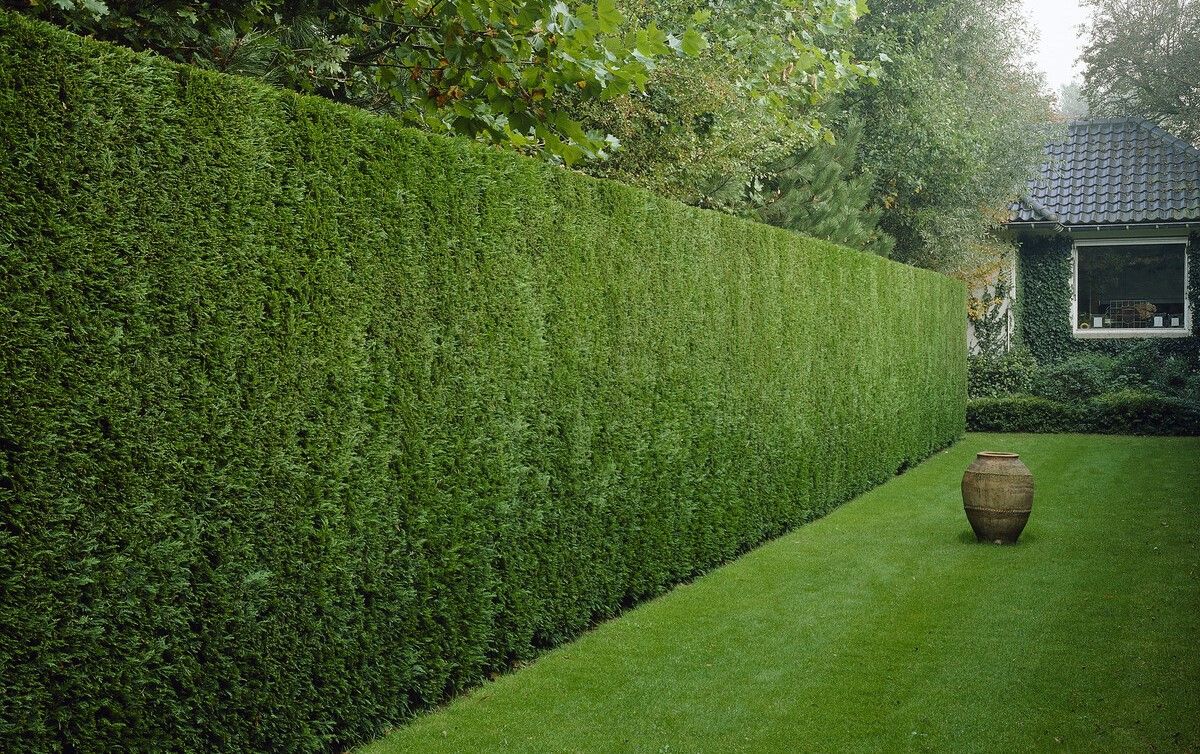Fast Growing Hedges

If you need a hedge and you need it yesterday, take a look at the UK’s fastest growing hedging plants.
These speedy shrubs can grow by as much as a metre per year, giving you an attractive living screen to filter out noise, wind and pollution or conceal unsightly sights from your garden. We find out which are the fastest growing hedges, why you need one, how to look after them properly - but first of all, what even is a fast growing hedge?
How fast do hedges grow?
Hedges can grow between 10-100cm per year with most coming in at around 30cm. Those that grow more than forty cm per year are considered to be fast growing. Most of these are evergreens, which keep their leaves all year round. As trees need their leaves to photosynthesise and grow, this means that evergreens - unlike deciduous hedges - can keep growing all through the winter.
So what are the fastest growing hedges?
In reverse order, these are our top five fast growing hedges.
5. Cherry Laurel
Prunus laurocerasus
Grows 40-60cm per year
The rich evergreen foliage of Cherry Laurel is instantly recognisable, with its long oval leaves and racemes of dainty white flowers in spring. The dense structure of this attractive plant is ideal for creating a windbreak or for privacy - it’ll screen off the sight and sounds of next door’s garden faster than they can light their barbecue. It’s a low maintenance plant which you don’t have to prune too regularly and will attract pollinators to your garden in spring. Choose this if you’re not a conifer fan, as it’s the fastest growing non-conifer hedge.
4. Hawthorn
Crataegus monogyna
Grows 40-60cm per year
If you’re looking for a wildlife friendly hedge, Hawthorn is unbeatable, with over 150 species supported by this fast growing deciduous plant. I especially love the scented white blossoms in the spring, which are followed by red fruits (haws) which you can make into jelly and gin or leave for the birds. It’s super hardy and suitable for all soil conditions - just be sure to check before pruning, as this is a favourite hedge for nesting birds.
3. Privet
Ligustrum ovalifolium
Grows 60cm per year
The dense, thick foliage of Privet makes it a great choice for screening. It’s usually evergreen, but is classed as semi-evergreen as it can lose some of its leaves in very severe winters. Privet only grows to a height of 5m, but it gets there fast! It’s covered in white flowers during the summer, attracting bees and butterflies, and can often be seen used as a formal hedge around traditional knot gardens and herb gardens. The variegated variety, Golden Privet, is a stylish and colourful alternative.
2. Alder
Alnus glutinosa
Grows more than 60cm per year
Deciduous Alder hedging is an absolute wildlife magnet, attracting more than ninety bird and insect species. It’s also incredibly useful in less favourable conditions including waterlogged and poor quality soils. In spring you’ll see long yellow catkins amongst the dense, serrated green leaves and in autumn small woody cones appear. It makes a great windbreak or screen to protect other plants from harsh weather conditions.
1. Leyland Cyprus
Cupressus leylandii
Grows 60-90cm per year
The fastest growing hedge in the UK! Leylandii hedges have a bad reputation for getting out of control and causing neighbour disputes, but if you keep on top of your pruning, these lush evergreens can be incredibly useful. They’re the quickest way to achieve a screening hedge and are also the best species for filtering out pollution - 40% better than other native species according to researchers. They also provide shelter for wildlife. If you prefer the look of Leylandii in a slightly less vigorous form, try bright and vibrant Golden Leylandii - Cupressocyparis leylandii 'Castlewellan Gold'.
Why you need a fast growing hedge
There are many reasons why you’d want a hedge to grow quickly - the most popular of these is for screening off your garden from neighbours (and minimising their noise!). As well as privacy and quiet, fast growing hedges can provide shade and hide eyesores - like a road, an electricity substation or the tiki bar your neighbour built in lockdown…
Fast growing hedging is also excellent value for money - the rapid growth rate means you can buy smaller plants that will reach the height you want within a couple of growing seasons, so you get the look you want much quicker.
How can I make my hedge grow faster?
Good planning and care are the key to a healthy hedge that will grow faster.
Planting
The best time to plant a hedge is in autumn when you can buy the more economical bare root hedge plants. You can plant potted trees now or in spring.
As long as the ground isn’t frozen or waterlogged, planting now will reduce the need for frequent watering and save you work. Make sure you choose a hedge that’s suitable for your soil and light conditions, or it will never grow to its full potential.
Pruning
It might seem counterproductive to trim a hedge that you want to grow as tall as possible, but it really does make a difference to the hedge’s health. Pruning in spring or summer will stimulate the plant to grow new shoots, which in time will produce a neater and denser hedge.
Watering
Newly planted hedges need a lot of watering to get established, which is another good reason to plant in autumn! If your part of the world isn’t getting enough rain, you’ll need to water your hedge plants deeply once or twice a week. Do this for the first year or two, and after that your hedge’s root system should be sufficiently well established that you won’t need to water it again except in very dry spells.
Feeding
It’s always a good idea to mix in plenty of compost in the planting hole when you’re starting off your hedge, and to mulch around the new plants yearly with bark chips, manure or similar. This gives the plants a nutrient boost and also helps to keep down competition from weeds. For the best growth, you can top up these nutrients every spring by feeding your hedge with a nitrogen rich slow-release fertiliser.

How high can you grow a hedge?
Under the 2003 Anti Social Behaviour Act, a ‘high hedge’ is one which is evergreen or semi-evergreen and 2m tall or higher. Any taller than that and you’re in danger of becoming public enemy number one.
When fast growing hedges go bad
Fast growing hedges are effective, good value, attractive and great for wildlife. What could possibly go wrong?
Pruning nightmares
The higher the hedge, the more difficult or even dangerous it can be to keep it in trim. Very fast growing hedges have a bad reputation for getting out of hand but this is slightly unfair. As long as you prune your fast growing hedge once or twice a year it will stay at a manageable height and cause no problems. Let it grow too tall and you’ll have to factor in the cost of extendable trimmers, pruning platforms or even paying someone else to deal with it.
Everybody needs good neighbours
It might be great for subduing the neighbours’ prog rock and hiding their hot tub antics, but if your fast growing hedge gets too high you could have a problem. Tall hedges can overshadow a neighbour’s garden, blocking out the light and stopping their plants from growing. If they complain to the council, you’ll be asked to cut it down to a reasonable height - but there’s no need to let things go this far. If you’re planning a tall hedge, talk to your neighbours and see if they’re OK with it - with a little understanding, or so we’re told, you can find the perfect blend.





















